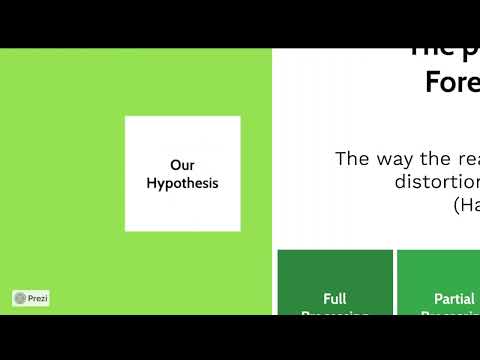 Speaker: Giulia Scapin
Speaker: Giulia Scapin
 Affiliation:VU Amsterdam, Department of Communication Science, The Netherlands; the University of Haifa, Department of Communication, Israel; Utrecht University, Research Institute for Cultural Inquiry (ICON) of the Faculty of Humanities, The Netherlands; ELIT Network (Marie Skłodowska-Curie grant agreement No 860516)
Affiliation:VU Amsterdam, Department of Communication Science, The Netherlands; the University of Haifa, Department of Communication, Israel; Utrecht University, Research Institute for Cultural Inquiry (ICON) of the Faculty of Humanities, The Netherlands; ELIT Network (Marie Skłodowska-Curie grant agreement No 860516)
Title: The impact of foregrounding in literary texts on stigma reduction of depression through identification and empathy.
Abstract (long version below): The present study explores the possibility to influence stigma about depression through exposure to a literary text. Such exposure is expected to foster identification, enhance empathic reactions and increase motivation for prosocial behaviour. In addition, foregrounding is expected to play a pivotal role in the potential effects of literary texts on readers by upsetting readers’ schemata. Therefore, in a correlational research design, the readers’ processing of foregrounding will be assessed for each participant, together with identification and empathy with the story character, prosocial behaviour and stigmatization; expected results will clarify the relationship between these variables in literary texts.

 Long abstract
Long abstract
In recent years, the world population has been exposed to a higher risk of suffering from mental disorders, in particular depression (e.g., Arpino & Pasqualini, 2021). Mental health disorders are per se a condition difficult to cope with, and people living with this condition also face stigmatization and social discrimination (e.g., Rössler, 2016; Yokoya et al., 2018). Stigma represents an issue for the whole society since it hinders prevention, early recognition of symptoms and approach to treatment. To reduce the stigmatization of marginalized populations, several researchers explored possible effective strategies. One of the most promising interventions is interpersonal contact with a stigmatized individual (Corrigan et al., 2021). However, direct contact with people belonging to an outgroup is not always possible and requires the stigmatized person to expose her/himself to further potential discrimination. Therefore, it is beneficial to explore alternative ways to access interpersonal contact.
According to previous research (e.g., Oatley, 1999; Mar & Oatley, 2008; Mar, 2018), the fictional world of a novel simulates a social environment where readers can meet characters belonging to potentially all kinds of backgrounds, where they can identify and empathize with them. Since identification and empathy, as one of identification subdimensions (Cohen, 2001), are considered powerful mediators in reducing intergroup stigmatization and improving attitudes towards outgroup members (Pettigrew & Tropp, 2008; Batson et al., 2002; Chung & Slater, 2013), it is reasonable to assume that vicarious contact with a character in the fictional world could affect readers’ stigma (e.g., Johnson, 2013).
However, little is known about which elements in the literary texts trigger such an effect. According to Miall and Kuiken (1999), one element that may distinguish literary texts from other genres is foregrounding. Foregrounding is the use of a disruptive language that “helps to upset the stereotypical schemata through which we usually make sense of the world” (Koopman, 2016, p. 64). However, empirical support for the role of foregrounding possibly reducing stigma is lacking and it is not clear how foregrounding may relate to processes of identification and empathy toward fictional characters. Furthermore, in recent years, the theory of failed foregrounding (Harash, 2019; 2021) even argues that the readers’ processing of foregrounding may fail, which would then not let the assumed effects to occur.
The present study will explore the hypothesis that foregrounding possibly stimulates readers to identify and empathize with the character and thus plays a role in the reduction of stigma, Based on the above, the hypotheses are:
H1. Deeper processing of foregrounding (full foregrounding) will co-occur with higher identification, and its sub-dimension empathy, than shallower processing of foregrounding.
H2. Identification, and its sub-dimension empathy, will correlate with deeper processing of foregrounding (full foregrounding) and prosocial behaviour and reduction of stigma.
Methods
In the present study, a literary extract about a character living with depression will be selected. The text will be analysed by an expert team, highlighting the potential foregrounding devices, according to the holistic approach used by Kuzmicova et al. (2017; cf. Van Peer et al., 2021). We will use the findings as a starting point for asking participants to elaborate on these elements in the text, following the retrospective think-aloud technique of Harash (2021).
A non-experimental, correlational research design will be chosen. All participants will read the same text. After reading, aesthetic emotions (the Aesthetic Appraisal Scale, Harash, 2021), identification scale (and its sub-dimension empathy, Tal-Or and Cohen, 2010), prosocial behaviour, and stigmatization (Depression Stigma Scale, Griffith et al., 2008) will be assessed. The order of presentation of the questionnaires will be randomized across participants. At the end of the questionnaires, the text will be presented again and the retrospective think-aloud interview will be performed individually. The analysis will control for participants’ need for cognition (i.e., individuals inclination to make a cognitive effort to deeply understand the inner meanings of a text; Lins de Holanda Coelho et al., 2020), literary reading experience, educational background, familiarity with depression, age, gender, and text comprehension. At the end of the session, participants will be debriefed.
Data will be collected between March and June 2022 so that preliminary results will be presented at the conference.
Expected results and Conclusion
This study will clarify the potential relation of foregrounding in literary texts on the reduction of stigmatization through identification and empathy. The results may support the use of literary texts in countering the stigmatization of marginalized populations, making contact between people more accessible through the vicarious experience in the fictional worlds.

